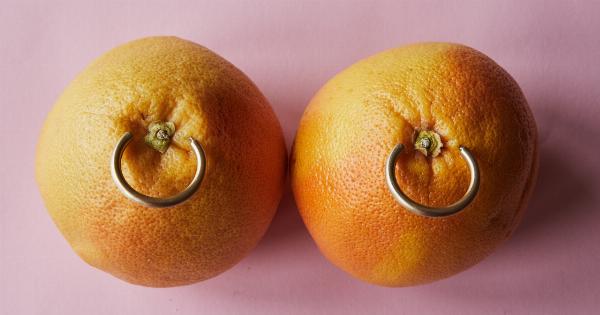Chest lumps can be a cause of concern for anyone. They may appear suddenly or grow over time. It’s essential to examine any lump that appears on your chest and see your doctor for a proper diagnosis.
In this article, we will discuss everything you need to know about chest lumps and their possible causes.
What are Chest Lumps?
Chest lumps refer to any unusual masses or bumps that develop on the chest wall or the breast tissue. These lumps can develop at any age, but they are more common in women. They can vary in size, shape, and texture from being soft, firm, or hard.
Some lumps may cause pain, while others may not.
Causes of Chest Lumps
There are various causes that can lead to chest lumps. Below are the most common causes:.
Breast Conditions
Chest lumps can occur due to various breast conditions, such as fibroadenoma, mastitis, breast cysts, or breast cancer. Fibroadenoma is a benign tumor that is common in young women.
Meanwhile, mastitis is an infection of the breast tissue that can cause a lump, swelling, and redness. Breast cysts are fluid-filled sacs that can develop in the breast tissue and cause a lump. Lastly, breast cancer can cause a lump in the breast tissue, and it is essential to get a proper diagnosis.
Fatty Tissue
Some people may develop chest lumps due to the accumulation of fatty tissue. These lumps are usually soft and harmless, but they can increase in size and cause discomfort.
Lipoma
A lipoma is a lump that develops under the skin when fat cells grow in a particular area. These lumps are usually soft, movable, and painless. They can develop on any part of the body, including the chest.
Injuries
Chest lumps can also occur due to injuries such as a broken rib or a bruise. These lumps may be painful, and it is essential to see a doctor if you experience these symptoms.
Lumps in the Lymph Nodes
Lumps can sometimes develop when the lymph nodes in the chest become inflamed. Lymph nodes are small glands that help fight infections and diseases. When they become inflamed, they can cause lumps to develop in the chest area.
Diagnosing Chest Lumps
It is essential to see a doctor if you notice any lumps on your chest. Your doctor will perform a physical exam and may order some tests to determine the cause of the lump. These tests may include a mammogram, ultrasound, biopsy, or MRI.
Treatment for Chest Lumps
The treatment for chest lumps varies depending on the cause. Below are some treatments:.
Surgery
If the lump is cancerous, your doctor may recommend surgery to remove the lump. Depending on the extent of the cancer, the surgery may involve removing the breast tissue or just the lump.
Medications
If the lump is caused by an infection, your doctor may prescribe antibiotics to treat the infection. If the lump is painful, your doctor may also prescribe pain medication.
Monitoring the Lump
If the lump is benign and not causing any symptoms, your doctor may recommend monitoring the lump to see if it changes in size or shape.
Preventing Chest Lumps
Preventing chest lumps depends on the cause. Some tips to prevent chest lumps include:.
Self-Examination
Performing a regular self-examination of your breasts can help you detect any changes early on. If you notice any lumps or changes in your breast tissue, consult with your doctor immediately.
Healthy Lifestyle
Maintaining a healthy lifestyle, such as exercising and eating a well-balanced diet, can help prevent chest lumps and other health conditions.
When to See a Doctor
You should see a doctor if you notice any lumps on your chest. You should also consult with your doctor if you experience any of the following symptoms:.






























